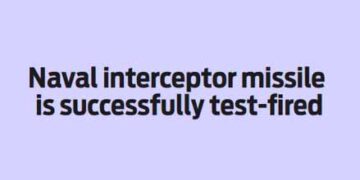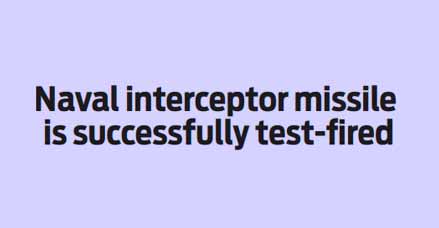Sindhu Jha
NEW DELHI: India’s ambitious ballistic missile defence (BMD) system achieved success with the first flight test of an endoatmospheric interceptor missile from a ship in the Bay of Bengal off the coast of Odisha.
By engaging and neutralising a hostile ballistic missile threat, the sea-based missile’s trial, according to the defence ministry, placed India into a select group of countries with such a capability.
AWACS (airborne warning and control systems) and other hostile aircraft, as well as approaching long-range nuclear missiles, can be intercepted by BMD system. The Indian Navy and the Defence Research and Development Organisation (DRDO) were commended by defence minister Rajnath Singh for the successful testing of the shipbased BMD system’s capabilities. India has been working to improve its ability to intercept enemy ballistic missiles both inside and outside the atmosphere of earth.
Endo-atmospheric missiles are those that function within the earth’s atmosphere and have a range of less than 100 kilometres. According to specialists, the exo-atmospheric missiles are capable of completing missions in the uppermost part of the earth’s atmosphere.
India’s phase-II ballistic missile defence interceptor AD-1, which can engage a wide variety of targets, successfully completed its first flight test in November. Long-range ballistic missiles and planes can be intercepted by the AD-1 longrange interceptor missile in both “low exo-atmospheric” and “endoatmospheric” settings. Singh congratulated DRDO, the navy and industry partners involved in the successful demonstration. DRDO chief Samir V Kamat said the country had achieved self-reliance in developing complex network-centric anti-ballistic missile systems.
















